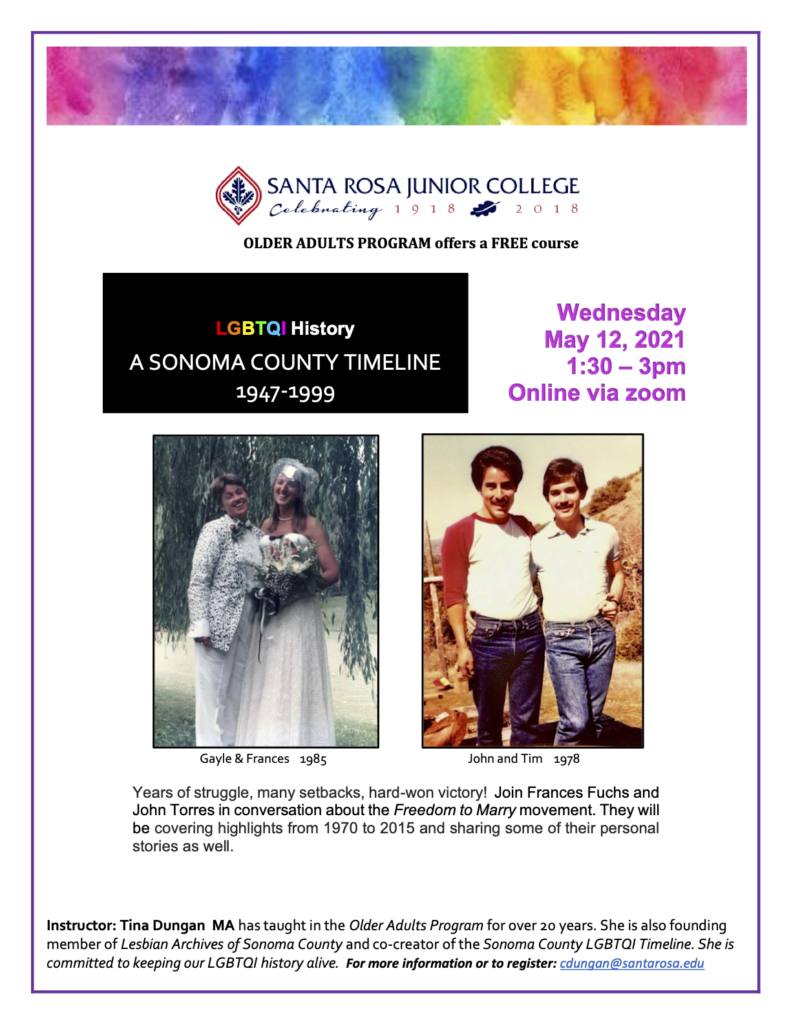Sonoma County Pride (SCP) is pleased to welcome back Graton Resort & Casino as Annual Title Sponsor of this year’s Pride celebrations and host of this year’s unique re-imagined “Beyond the Rainbow Drive-Through Parade” on Saturday, June 5. A keystone of this year’s month-long celebration, the design of this parade event acknowledges and respects the need for COVID-19 safety and social distancing by re-imagining the event as a drive-through experience. Organizations and individual contingents will occupy defined spaces for their stationary displays (floats) and celebrants, allowing attendees to drive along the parade route and experience the excitement and community of Pride in a unique and unprecedented manner. A streaming soundtrack will be available to guide and entertain parade-goers as they make their way through the space.
According to SCP, “our goal is to have no more than 20 to 30 contingents made up of local LGBTQI organizations, allies, and Sonoma County Pride sponsors. Each group will occupy a designated area in the large outdoor lot at the south end of the property to stage their stationary ‘float’, with mindful limits on the number of people allowed on-premise. As in our traditional parade, Sonoma County Pride 2021 judges will judge and choose the winning parade displays for 2021, to be announced during one of our live streams.”
Greg Sarris, Chairman of Graton Resort & Casino, is happy to offer the Resort’s support for Pride and the Sonoma LGBTQ community again this year. “Graton Resort and Casino is honored to be the Annual Title Sponsor of 2021 Sonoma County Pride. Our core values are fostering compassion, inclusiveness and understanding of all citizens in our community. I am always adamant in making sure that the LGBTQ community is not only represented but protected. As I have said before, the only thing we don’t tolerate here at the casino resort is intolerance.”
Grace Villafuerte, Vice President of SCP, echoes Sarris’ sentiment in looking forward to another year of their support and cooperation. “We are so grateful for Graton Resort‘s continued commitment to the LGBT community of Sonoma County, and their ongoing support for Sonoma County Pride, which allows us to offer a month-long series of events, that we hope will provide comfort during a time of uncertainty, a renewed sense of community, and enjoyment and peace throughout June.”
Christopher Kren-Mora, President of SCP, is confident that this adaptation to the usual Pride festivities will be a fun and memorable experience for all. “Sonoma County Pride is proud and grateful to announce that Graton Resort & Casino has determined once again to partner with our organization in presenting events for 2021 so that SCP is able to continue to be a beacon of education, solidarity, equality and unity to the community. Graton Resort & Casino has been a supporter and major contributor to Sonoma County Pride and the LGBT community for since it opened in 2013.”
Join the excitement of the “Beyond the Rainbow Drive-Through Parade” Saturday, June 5, from 11am to 2pm. To reserve your time block or have your own float or display in the parade visit SonomaCountyPride.org






